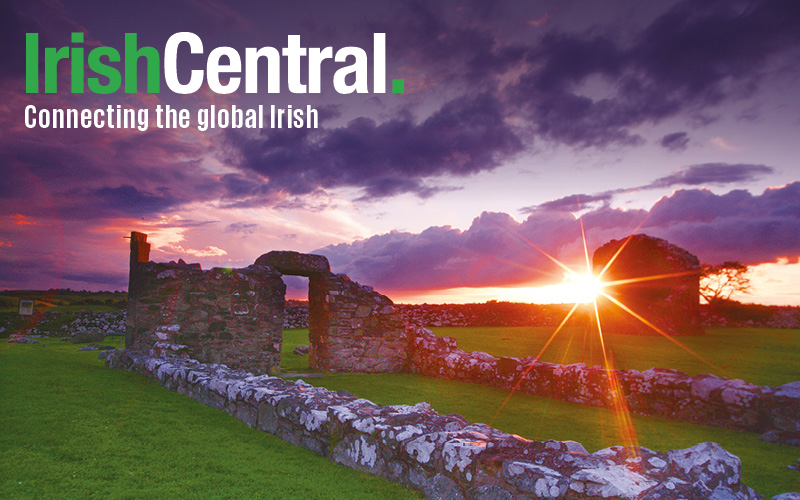The Colours of Man
By Micheal O’Conghaile
Michael O’Conghaile is already a famous short story writer in the Irish language, but this new collection of his most celebrated works translated into English will introduce him to a larger (and I am certain appreciative) new audience.
A typical offering in this brilliantly funny collection of short stories is Death at a Funeral, where O’Conghaile illustrates just why he’s widely revered as an Irish language author. O’Conghaile’s works illustrate what the poet W.B. Yeats called the Irish preference for a swift current in both language and human interaction.
Just look at these opening lines and marvel at their economy and wit: “It would have been ridiculous for Eamon Bartley to stay ensconced in his coffin any longer. He couldn’t anyway. He was far too good to have died.”
O’Conghaile can keep this kind of thing up without ever faltering, and that hilarious streak of black absurdity runs through his best works, disarming you with its sheer good humor and smarts. But for all their surface dazzle, these are deceptively subtle works with quietly subversive intentions.
Possessing an insider’s knowledge of the rhythms of Irish rural life as he simultaneously satirizes them with an outsiders remove, O’Conghaile is one of the most interesting and prodigiously gifted Irish writers I have read in years.
Clo Iar-Chonnacht, $19.
The Absolutist
By John Boyne
Irish novelist John Boyne is already an Irish publishing phenomenon. Best known for the hauntingly sad New York Times bestselling novel (and then film) The Boy in the Striped Pajamas, his new offering The Absolutist is his most satisfying and affecting novel to date.
Set in September 1919, Boyne introduces us to shell shocked 21-year-old Tristan Sadler, who has just taken a train from London to Norwich to deliver a package of letters to the sister of Will Bancroft, the young man who was his friend (and whom he fought alongside) during the Great War.
But Tristan has secrets, and it turns out the letters are not the real reason for his visit. Breaking down, he tells Will’s sister the true story of his friendship with her brother -- from their first meeting on the army training grounds at Aldershot to the wrenching finale in the trenches of northern France.
Boyne’s control of his material is masterful as he leads us into the smoking no-man’s-land of his hero’s scorched heart and soul.
Betrayal, jealously, pride and the stubborn refusal to embrace what you know will save you are all on display in this tragic and powerfully affecting new Irish novel.
Other Press, $16.95
Where Were You: Dublin Youth Culture & Street Style 1950-2000
By Garry O’Neill
Ravers, emos, goths, rockers, punks, new romantics, mods, skinheads, teddy boys -- depending what decade, Dublin knew them all.
Non-conformity has always had its own dress code, and now at last it has its own judicious chronicler in author Garry O’Neill (who for the record was once a member of one the most exalted underground youth groups of the last century – he was a teenage fan of The Smiths at their peak).
Beginning in 1950, O’Neill has carefully plundered the photo collections of hundreds of Dublin’s former scenesters to create this mammoth, funny and often moving tribute to the twin passions of pop music and street style.
Where Were You doesn’t intend to wallow in nostalgia, although it certainly invokes street styles and attitudes that are long gone. Instead it’s a vivid document of the hopes and aspirations of five generations of Dublin street culture.
Teddy boys are photographed in the grim Dublin landscape of the fifties. The loose-limbed swingers and hippies of the sixties stand in sharp and challenging contrast to the homespun city they parade through.
The seventies are commonly thought of as a lost decade for fashion, but the arresting diversity of style on the streets in those years shines through clearly in O’Neill’s fascinating book. The seventies scene begins with hippie relics and their voluminous flares, but it ends up with skinheads and punks and rockers revitalizing Dublin club land and music.
The eighties, one of the darkest economic decades in recent Irish history, still somehow manages to offer the widest range of alternative scenes in the last five decades, and O’Neill’s book captures the new romantics, the gender benders, the goths, the rockabillys and the newly emerging club kids who would lead the street style into the final decade of the 20th century.
O’Neill’s book is more than simply a record of the styles of each era. He has captured the hopes and dreams of 50 years of Irish teenage life. This book is a must have for anyone who grew up in Ireland between 1950 and 2000.
Hi Tone Books, $40.
Looking for Irish book recommendations or to meet with others who share your love for Irish literature? Join IrishCentral’s Book Club on Facebook and enjoy our book-loving community.




Comments